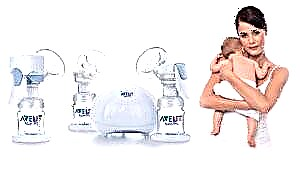One of the most significant questions that occupies all parents without exception is when and in what sequence their baby's milk teeth will start to cut. Despite the fact that the physiological process of the appearance of teeth in a baby is individual, there are certain temporal and ordinal patterns that indicate that everything is going well.

Teething is an important stage in the life of every baby.
Teething procedure
The procedure and schedule for teething in children under one year old are generally accepted and approved by the World Health Organization. In accordance with them, the order in which the baby acquires teeth is approximately as follows:
- Central lower incisors;
- Upper central incisors;
- Upper lateral incisors;
- Lower lateral incisors.
By about one year of age, a child should have eight teeth.
Interesting. The famous healer Hippocrates was sure that the first children's teeth had a milk etymology - they appear from the mother's breast milk.
Tooth growth chart
The graph of tooth growth in children under one year old is approximately the following:
- 6 months - lower central incisors;
- 8 months - upper central incisors;
- 10 months - upper lateral incisors;
- 12 months - lower lateral incisors;
- 16 months - front molars on the sides of the jaw;
- 2 years - canines;
- 3 years - posterior molars.

If the teeth do not grow for a long time, it is worth consulting a pediatrician
In total, a baby has 20 teeth by the age of three. Of course, there may be deviations from the teething schedule in infants and children over a year old, but if they are not too significant, there should be no cause for concern. By about the age of six, the milk teeth begin to change to permanent ones.
Interesting. Loss of milk teeth occurs in the same sequence in which they erupted earlier. The process can last for a long time - all teeth change to permanent ones up to 12 years, and the third molars, which are popularly called wisdom teeth, appear already at a quite mature age.
Despite the fact that the pattern and graph of the growth of teeth in children under one year old is a kind of indicator of the norm for the development of an infant, do not forget that each newborn baby is individual, and many factors affect its development, including heredity and characteristics of the mother's pregnancy. So if the appearance of teeth occurs a little earlier or later, and the incisors themselves begin to cut in the wrong sequence, this is a variant of the norm. If the delay is too noticeable, and by the age of one year, the baby has no signs of teething, you should show the baby to a specialist.
Important! Milk teeth are smaller than permanent ones, and their roots are rather short.
Description of the teething process
In search of an answer to the question of when babies' teeth erupt, the schedule is far from the only thing to be guided by.

Cutting teeth is a painful process
There is a very specific symptomatology, unmistakably indicating that the child's body is preparing for the beginning of the appearance of teeth. These are the following points:
- Inflammation of the gums. If the baby's gums become inflamed and loose, this is a sure sign that his teeth are beginning to grow. An incisor that breaks outward pushes and injures the gum, which causes the development of inflammation. The gums themselves are not only red, but also very painful. Any object that a baby takes in his mouth injures them, therefore parents should mentally prepare for the fact that the baby will be very capricious and cry. This can continue for quite a long time.
- Temperature. Almost any inflammatory process is accompanied by an increase in body temperature. Fever in the case of teething is caused by biological substances released during gum disease. The temperature appears a couple of days before the appearance of the tooth and can stay at 38 ° C. Once the gums are open, the fever usually subsides.
- Increased excitability. When teeth begin to cut, the child becomes extremely excitable. He is constantly naughty, sleeps very badly. In addition, the sensitivity to external stimuli increases, especially to sounds and light. The main reason for this behavior is not so much associated with an increase in body temperature, but with constant burning and tension inside the gums.
- Runny nose and cough. In some cases, tooth growth may be accompanied by a runny nose and cough. Their appearance is associated with increased production of saliva. The latter, when it enters the nasopharynx, acts irritatingly and helps to activate the work of the nasal glands. Most often, the cough is rare and moist, and the discharge from the baby's nose is liquid and transparent. Nasal congestion is usually absent. Both a runny nose and a cough should go away as soon as the tooth appears on the surface and the level of salivation returns to normal levels.
- Digestive system disorders. Cutting teeth can also take place with a decrease in appetite in babies. Refusal to eat is associated with pain in the mouth. Decreased appetite in infants will continue until the tooth that is breaking out, erupts completely. Sometimes the child may vomit or spit up. These symptoms are noted infrequently, as a rule, are limited exclusively to temperature.
Important! If vomiting continues for more than one day, this is an occasion to show the child to the pediatrician. Perhaps, against the background of tooth growth, some other gastrointestinal disorder or a previously hidden pathology was activated.
- Changes in stool consistency. Changing the consistency of the baby's stool is directly related to the increase in salivation. When saliva enters the intestinal area, it dilutes the feces. In this case, the feces itself must necessarily retain a yellowish color. The presence of green mucus or blood should be a reason to seek medical attention.
- Skin irritation. Skin irritation during teething most often occurs in the mouth and chin. A similar phenomenon is also directly related to excessive salivation. Regular lubrication of baby's skin with cream will help to avoid irritation. The symptom disappears immediately after the tooth grows.
Important! Parents of babies are advised to have a special calendar in which they will make notes about the erupted teeth. This will make it possible to understand how close the growth of the teeth is to the official schedule, which experts consider the norm.
How long does the temperature last
If the appearance of milk teeth is accompanied by an increase in temperature, the parents are most concerned about how long this unpleasant symptom can last. In the normal course of events, hyperthermia lasts from 1 to 3 days - this is the period when the incisor breaks through the layer of the gingival mucosa.

The timing of teething should be monitored
Temperatures range from 37 ° C to 38 ° C. This value is considered subfebrile and does not require treatment. Most often, the temperature indicator increases in the evening or at night. Despite this, in general, the child is doing well.
There is a certain category of children who tolerate even a low temperature very hard. Most often this is due to a weakened immune system and individual characteristics of the body.
A strong rise in temperature (above 39 ° C) is fraught with the following dangers:
- increased oxygen consumption by the body;
- the water-salt balance is disturbed;
- energy reserves are depleted;
- the load on the heart increases;
- the danger of clotting inside blood vessels increases;
- the risk of muscle cramps increases.

When teeth start to erupt, don't be intimidated.
Teething is a serious challenge for both the baby and his parents. This is an important stage of development, which everyone will have to step over. Therefore, the main task of moms and dads is to make every effort so that the baby survives the teething with minimal discomfort.



